Abstract
Antibiotics such as rifampin that act on phagocytosed bacteria have clinical advantages. The investigation of such intraphagocytic activity of antibiotics is, however, hampered by the time-consuming and cumbersome procedures necessary for enumerating viable bacteria. We have developed a semiautomatic biophotometric method for this purpose that permits the processing of relatively large numbers of samples. Using this method with Staphyloccus aureus Wood 46 as a test organism, we studied the dose dependence of the activities of a number of antibiotics against intraphagocytic bacteria. We could confirm the very good intracellular activity of rifampin. Its activity at low concentrations was slightly better against intracellular than against extracellular bacteria. In contrast, clindamycin and erythromycin, both of which have been reported to accumulate within phagocytes, did not exhibit a correspondingly enhanced intracellular activity, erythromycin being active intracellularly only at high concentrations. Clindamycin and vancomycin were effective against intracellular organisms, but only at relatively high concentrations owing to their low bactericidal activity against S. aureus Wood 46. Penicillin G, ampicillin, gentamicin, and streptomycin exhibited no useful intracellular activity. These results demonstrate that radioactive accumulation studies of antibacterial agents are not sufficient to show intracellular activity. Intracellular activity must be demonstrated in a functional test, preferably with graded concentrations of the test substance.
Full text
PDF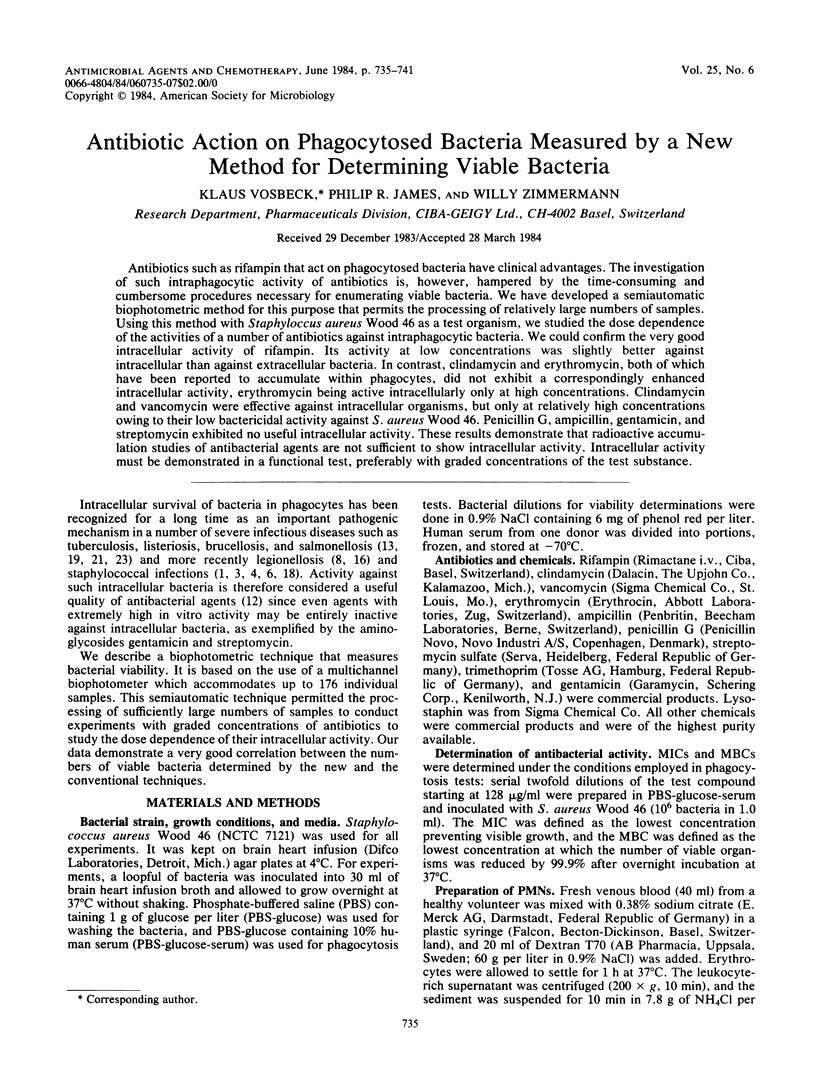
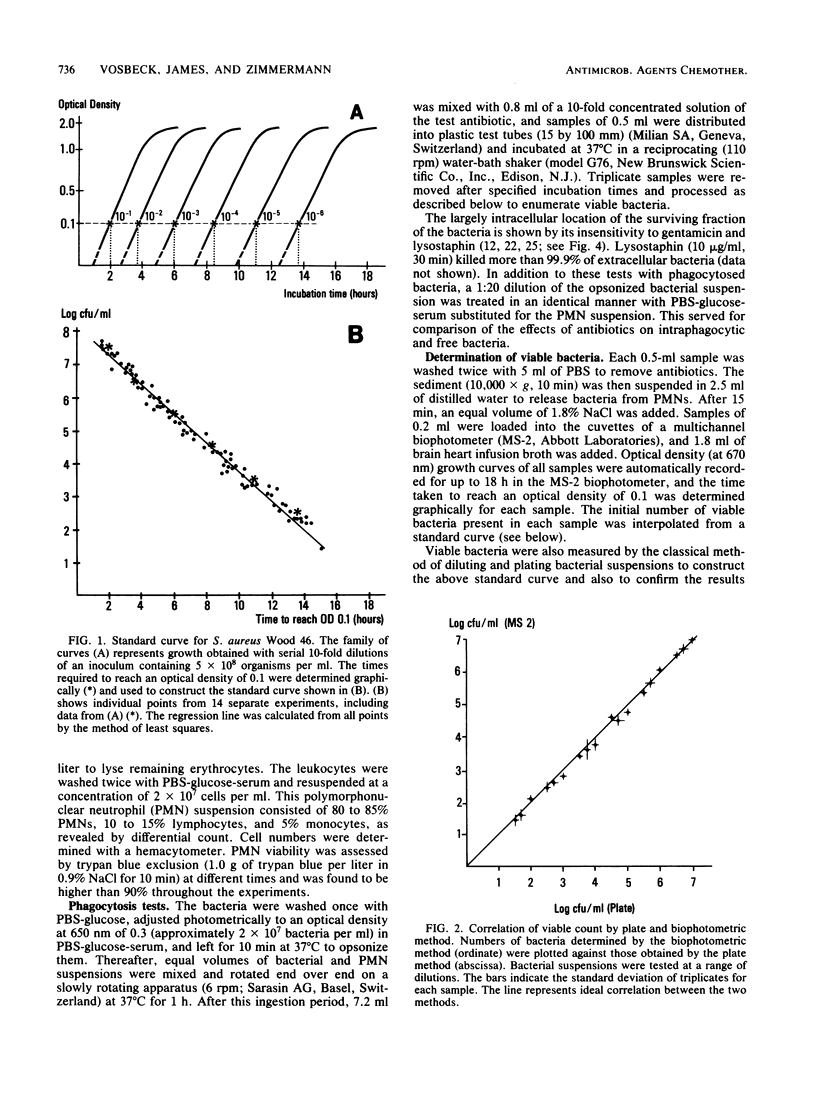
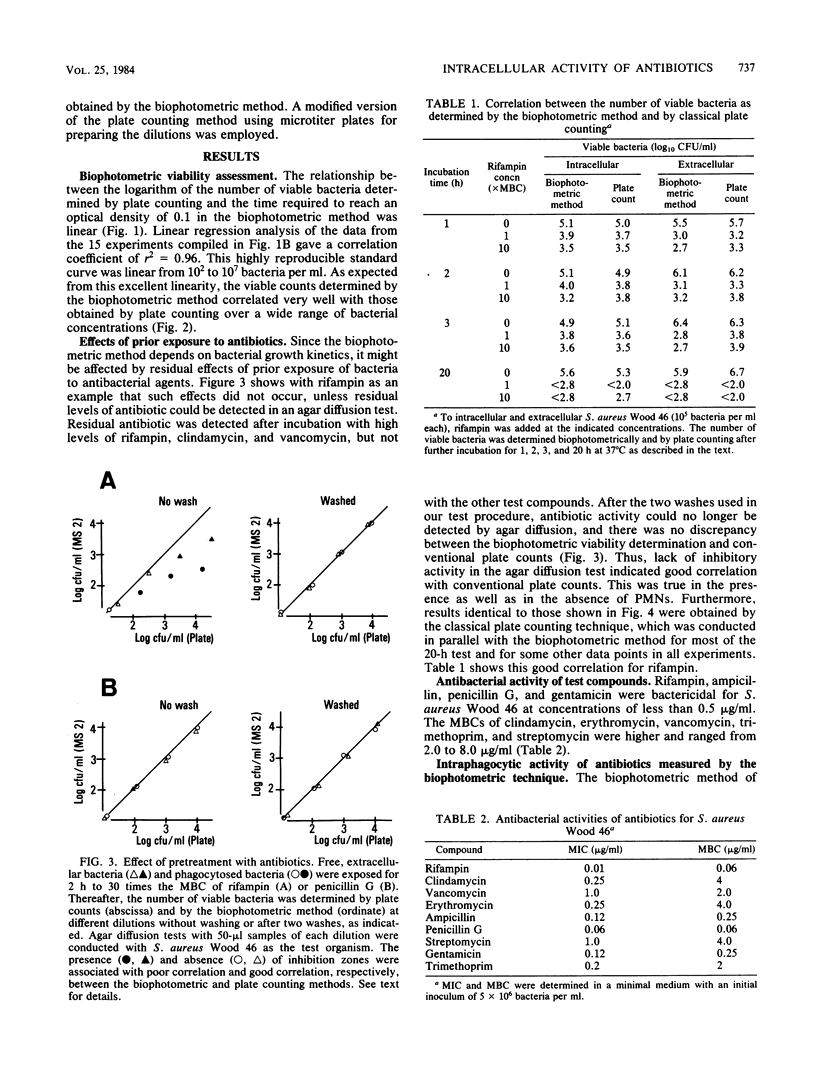
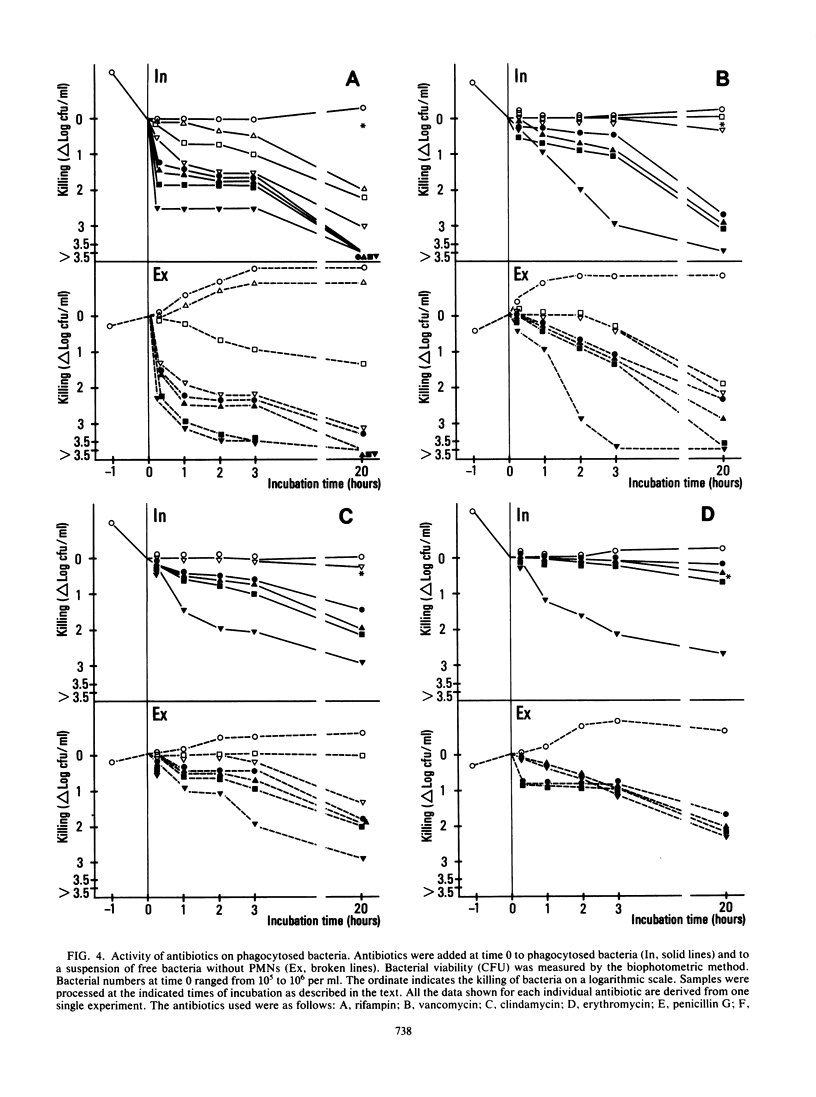
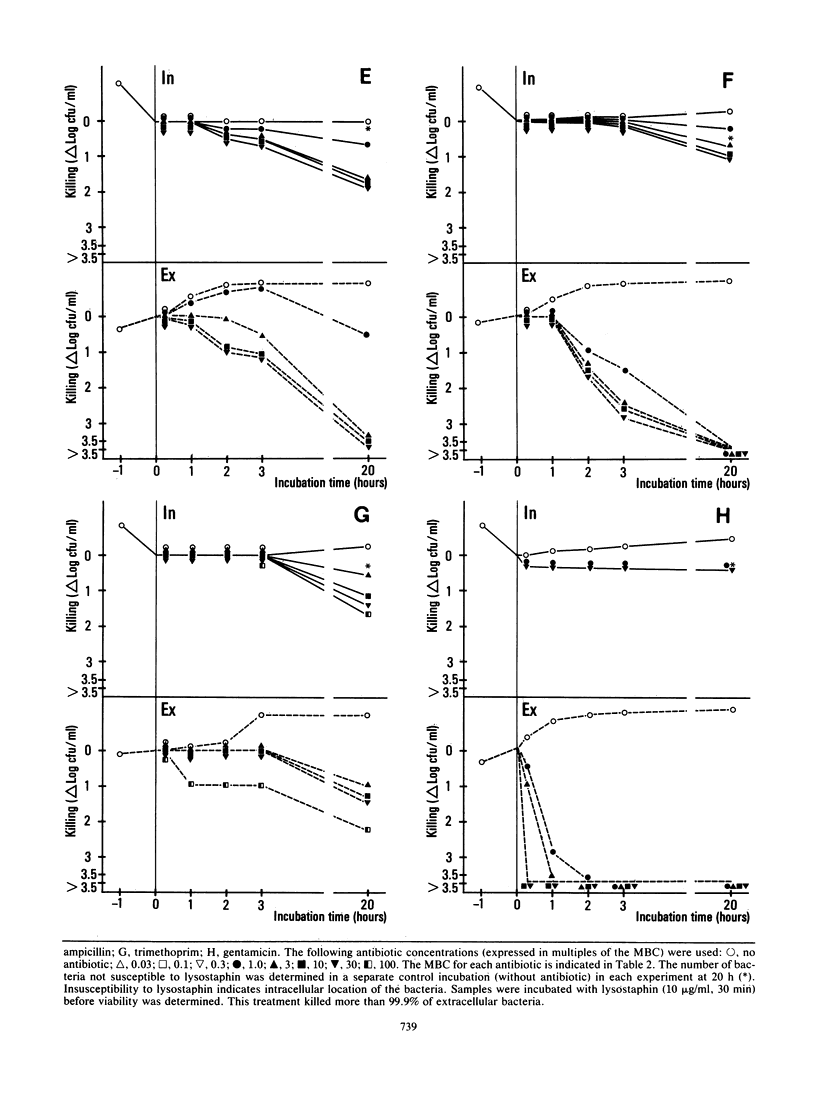
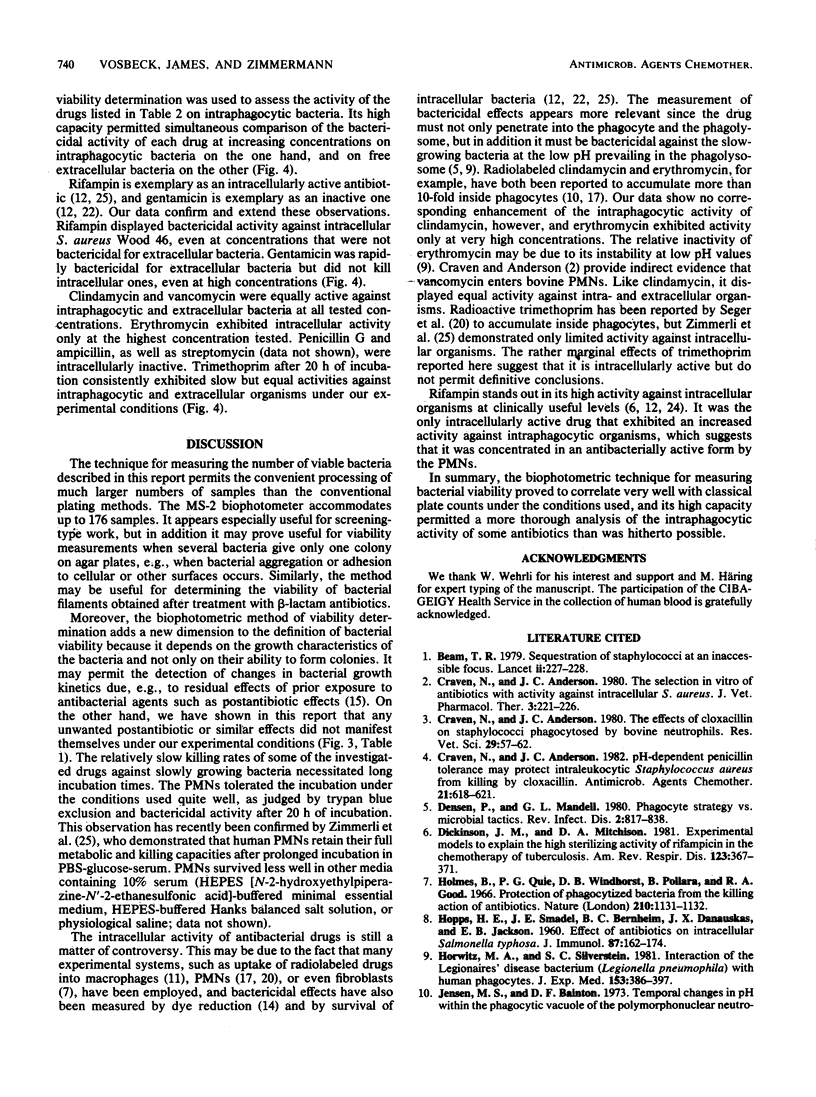
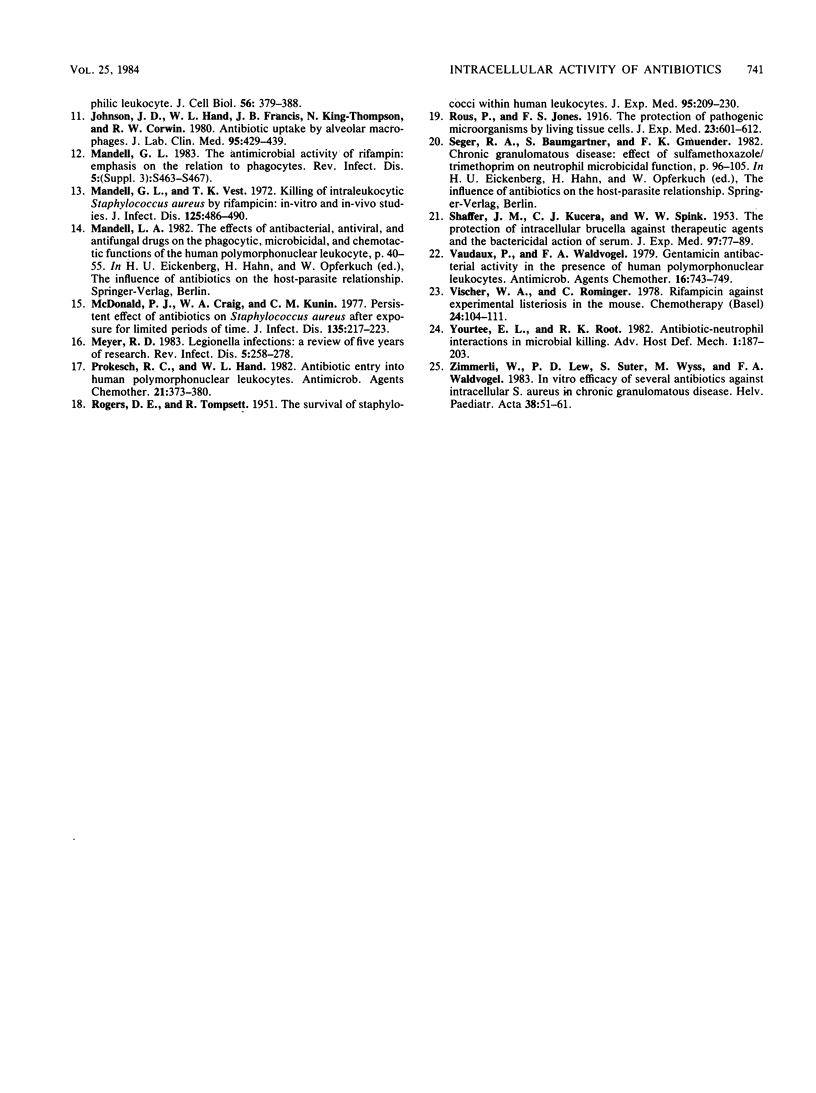
Selected References
These references are in PubMed. This may not be the complete list of references from this article.
- Beam T. R., Jr Sequestration of staphylococci at an inaccessible focus. Lancet. 1979 Aug 4;2(8136):227–228. doi: 10.1016/s0140-6736(79)90239-3. [DOI] [PubMed] [Google Scholar]
- Craven N., Anderson J. C. The effects of cloxacillin on staphylococci phagocytosed by bovine neutrophils. Res Vet Sci. 1980 Jul;29(1):57–62. [PubMed] [Google Scholar]
- Densen P., Mandell G. L. Phagocyte strategy vs. microbial tactics. Rev Infect Dis. 1980 Sep-Oct;2(5):817–838. doi: 10.1093/clinids/2.5.817. [DOI] [PubMed] [Google Scholar]
- Dickinson J. M., Mitchison D. A. Experimental models to explain the high sterilizing activity of rifampin in the chemotherapy of tuberculosis. Am Rev Respir Dis. 1981 Apr;123(4 Pt 1):367–371. doi: 10.1164/arrd.1981.123.4.367. [DOI] [PubMed] [Google Scholar]
- HOPPS H. E., SMADEL J. E., BERNHEIM B. C., DANAUSKAS J. X., JACKSON E. B. Effect of antibiotics on intracellular Salmonella typhosa. II. Elimination of infection by prolonged treatment. J Immunol. 1961 Aug;87:162–174. [PubMed] [Google Scholar]
- Holmes B., Quie P. G., Windhorst D. B., Pollara B., Good R. A. Protection of phagocytized bacteria from the killing action of antibiotics. Nature. 1966 Jun 11;210(5041):1131–1132. doi: 10.1038/2101131a0. [DOI] [PubMed] [Google Scholar]
- Horwitz M. A., Silverstein S. C. Interaction of the Legionnaires' disease bacterium (Legionella pneumophila) with human phagocytes. I. L. pneumophila resists killing by polymorphonuclear leukocytes, antibody, and complement. J Exp Med. 1981 Feb 1;153(2):386–397. doi: 10.1084/jem.153.2.386. [DOI] [PMC free article] [PubMed] [Google Scholar]
- Jensen M. S., Bainton D. F. Temporal changes in pH within the phagocytic vacuole of the polymorphonuclear neutrophilic leukocyte. J Cell Biol. 1973 Feb;56(2):379–388. doi: 10.1083/jcb.56.2.379. [DOI] [PMC free article] [PubMed] [Google Scholar]
- Johnson J. D., Hand W. L., Francis J. B., King-Thompson N., Corwin R. W. Antibiotic uptake by alveolar macrophages. J Lab Clin Med. 1980 Mar;95(3):429–439. [PubMed] [Google Scholar]
- Mandell G. L. The antimicrobial activity of rifampin: emphasis on the relation to phagocytes. Rev Infect Dis. 1983 Jul-Aug;5 (Suppl 3):S463–S467. doi: 10.1093/clinids/5.supplement_3.s463. [DOI] [PubMed] [Google Scholar]
- Mandell G. L., Vest T. K. Killing of intraleukocytic Staphylococcus aureus by rifampin: in-vitro and in-vivo studies. J Infect Dis. 1972 May;125(5):486–490. doi: 10.1093/infdis/125.5.486. [DOI] [PubMed] [Google Scholar]
- McDonald P. J., Craig W. A., Kunin C. M. Persistent effect of antibiotics on Staphylococcus aureus after exposure for limited periods of time. J Infect Dis. 1977 Feb;135(2):217–223. doi: 10.1093/infdis/135.2.217. [DOI] [PubMed] [Google Scholar]
- Meyer R. D. Legionella infections: a review of five years of research. Rev Infect Dis. 1983 Mar-Apr;5(2):258–278. doi: 10.1093/clinids/5.2.258. [DOI] [PubMed] [Google Scholar]
- Prokesch R. C., Hand W. L. Antibiotic entry into human polymorphonuclear leukocytes. Antimicrob Agents Chemother. 1982 Mar;21(3):373–380. doi: 10.1128/aac.21.3.373. [DOI] [PMC free article] [PubMed] [Google Scholar]
- ROGERS D. E., TOMPSETT R. The survival of staphylococci within human leukocytes. J Exp Med. 1952 Feb;95(2):209–230. doi: 10.1084/jem.95.2.209. [DOI] [PMC free article] [PubMed] [Google Scholar]
- SHAFFER J. M., KUCERA C. J., SPINK W. W. The protection of intracellular brucella against therapeutic agents and the bactericidal action of serum. J Exp Med. 1953 Jan;97(1):77–90. doi: 10.1084/jem.97.1.77. [DOI] [PMC free article] [PubMed] [Google Scholar]
- Vaudaux P., Waldvogel F. A. Gentamicin antibacterial activity in the presence of human polymorphonuclear leukocytes. Antimicrob Agents Chemother. 1979 Dec;16(6):743–749. doi: 10.1128/aac.16.6.743. [DOI] [PMC free article] [PubMed] [Google Scholar]
- Vischer W. A., Rominger C. Rifampicin against experimental listeriosis in the mouse. Chemotherapy. 1978;24(2):104–111. doi: 10.1159/000237768. [DOI] [PubMed] [Google Scholar]
- Zimmerli W., Lew P. D., Suter S., Wyss M., Waldvogel F. A. In vitro efficacy of several antibiotics against intracellular S. aureus in chronic granulomatous disease. Helv Paediatr Acta. 1983 Mar;38(1):51–61. [PubMed] [Google Scholar]


